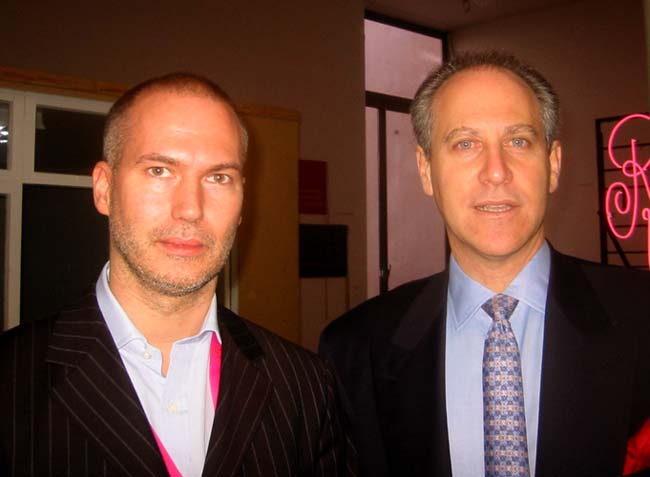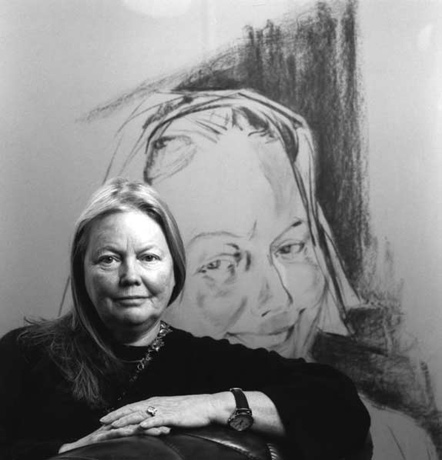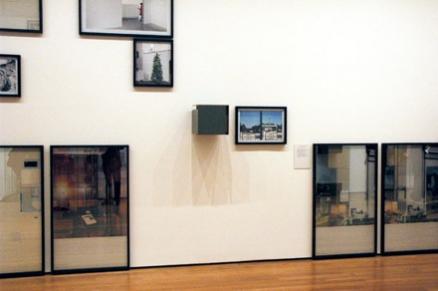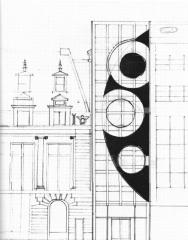Upcoming
Film Screenings & Events
The End of the Remake Trilogy

Blow Up, Stroll On
2006. Great Britain/USA. Directed by Christoph Draeger. A video remake of the club scene in Michelangelo Antonioni’s 1966 film Blow Up. 3 min.
My Generation
Upcoming
Film Screenings & Events
The End of the Remake Trilogy

Blow Up, Stroll On
2006. Great Britain/USA. Directed by Christoph Draeger. A video remake of the club scene in Michelangelo Antonioni’s 1966 film Blow Up. 3 min.
My Generation
Martin Kippenberger, The Problem Perspective
Museum of Modern Art
February 24 - May 11, 2009
In the MoMA lobby during the reception for the Martin Kippenberger show, there was a moment of unplanned performance art, bad behavior that some found a testimony to his enduring legacy.

People fed up at the long coat-check line began piling their coats on the floor, and, two hours into an open bar, a few began diving under, creating a writhing lobby octopus. Security guards broke it up, one noting to the applauding crowd, "This is not part of the Kippenberger exhibition. This is about people drinking too much."
But if I might say, the entire Kippenberger oeuvre is fundamentally about one person drinking too much, and everything that follows from that. As Holland Cotter noted in his review of the show:
As an artist he was a performer, an entertainer, a provoker, as he was in life. At punk bars and biennials he was the juiced-up guy who made scintillating speeches, picked stupid fights and periodically dropped his pants. He was the same person in his art.
January 1, 2009. On reading Erica Orden's "Collecting Smoke" text in New York Magazine examining MoMA's upcoming two year performance art initiative, which includes a Marina Abramovic retrospective and the acquisition of Tino Sehgal's The Kiss, all under the direction of the very enterprising Klaus Biesenbach, I felt compelled to jot down a couple of thoughts. A version of the text below also appears as a comment under my pseudonym on the New York Magazine site.
 Klaus Biesenbach and Glenn Lowry, 2004
Klaus Biesenbach and Glenn Lowry, 2004
Tino Sehgal was selected for the German pavilion at the 2005 Venice Biennale, was shortlisted for the Hugo Boss Prize, and has been a darling of a small but influential coterie of international jet setting curators of which Biesenbach counts himself a particularly ambitious member. So it is not surprising to see MoMA finally buy one of the "constructed situations" pieces, following the lead of the Tate and the Walker. To paraphrase another Sehgal work, "This Is Not New", especially for a curator eager to establish his bonafides over an entire realm of artmaking.

December 29, 2008. From Artforum.com via the New York Press comes word that the retirement of Alanna Heiss as director of the P.S. 1 Contemporary Art Center, rumored for months if not years, has finally been made official. A press release was issued today by the Museum of Modern Art, the behemoth that absorbed P.S. 1 almost a decade ago.
Heiss founded The Institute for Art and Urban Resources in 1971, with the mission of turning underutilized buildings in New York City into artist studios and exhibition spaces. In 1976 she established P.S. 1 (Project Space One) in a huge, abandoned schoolhouse in Long Island City, Queens. It was a time of experimentation, conceptualism, post-minimalism, installation, video and performance art, of scrappy alternative art spaces with modest economies and big dreams, a commercial hiatus after the glut of Pop had run its course but before the burgeoning Neo Expressionist movement added social cachet and market share to the scene. The art gods of the moment included Lawrence Weiner, Richard Nonas, Keith Sonnier, Dennis Oppenheim, Robert Smithson, Gordon Matta Clark, Vito Acconci, Joseph Kossuth, James Turrell, Richard Tuttle and Bruce Nauman.
For over thirty years, Heiss has been P.S. 1's only director and its very visible figurehead. An idiosyncratic visionary who often runs the space like a personal fiefdom, she is given to an uncompromising, by-the-seat-of-her-pants management style. This allows for bursts of curatorial and organizational brilliance, for early discoveries of emerging artists, collaborations with young curators and critics, and for challenging the paradigms of exhibition. Heiss has a mercurial temperament, an impulsive energy marked by sudden enthusiasms and antipathies. She has been described as "feisty" and "brassy". This can bring dramatic successes but also public failures, the built-in flip side of a highly experimental posture.
 installation shot, Jan de Cock, Denkmal 11
installation shot, Jan de Cock, Denkmal 11
The young Belgian artist Jan de Cock (b. 1976) has shown in many European venues over the last several years, including the Tate Modern in London and De Appel in Amsterdam. This exhibition at MoMA is his first major show in the United States. Landing on our shores after having achieved the status of a distant but persistent rumor, if not quite a cult item, his work turns out to be compellingly erudite, tasteful and clever. But after the first flush of formal audacity wears thin, it unfortunately registers as an emotional dead end, dry and airless, failing to find resonance beyond its own hermetic self involvement.
 update
update
In regards to the upcoming "Automatic Update" exhibition at the MoMA NY, there seems to be a great deal of question about a number of issues. These are; the re-writing of history,the relevance of net-based art, the perception of popular culture, and the role of the New Media movement/ Genre in the contemporary scene. What seems to be a key dialectic about the state of New Media as force in contemporary art derives from two poles; one from the MoMA colophon about the Automatic Update show; The dot-com era infused media art with a heady energy. Hackers,programmers, and tinkerer-revisionists from North America, Europe, and Asia developed a vision of art drawn from the technology of recent decades. Robotic pets, PDAs, and the virtual worlds on the Internet provoked artists to make works with user-activated components and lo-res, game-boy screens. Now that "new media" excitement has waned, an exhibition that illuminates the period is timely. Automatic Update is the first reassessment of its kind, reflecting the artists ambivalence to art, revealed through the ludicrous, comical, and absurd use of the latest technologies. [1]
 Proposal for MoMA
Proposal for MoMA
Just before Gordon Matta-Clark died in 1978 the Museum of Modern Art approved a proposal by him to cut into the façade of the original MoMA building before the first renovation and expansion of the building.
The piece was never executed. Gordon’s proposal was a bit of one-upsmanship on a certain level. Christo had proposed in the 1960’s to wrap the façade of MoMA but it remained a proposal. Cutting into the façade of MoMA was a lot more destructive than a gentle wrapping in canvas tarps.
Herzog & de Meuron at MoMA: The Limits of Pedagogy and the Specter of the Dysfunctional Museum
Artist's Choice: Perception Restrained
Museum of Modern Art, New York
June 21 through September 25, 2006
(This text was commissioned by Paletten Art Magazine, based in Gothenburg, Sweden. It will appear in issue #266, January 2007, focusing on art and pedagogy. www.paletten.tk )